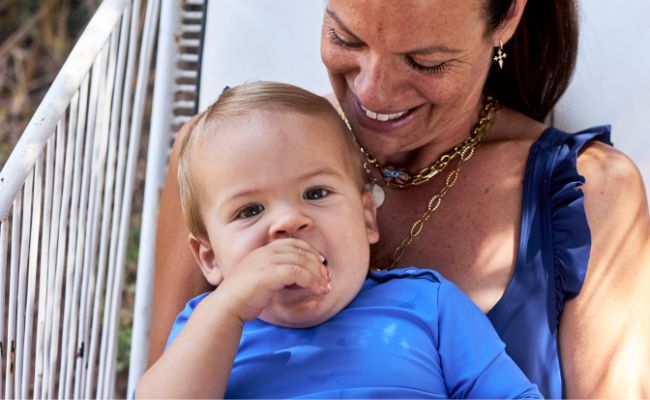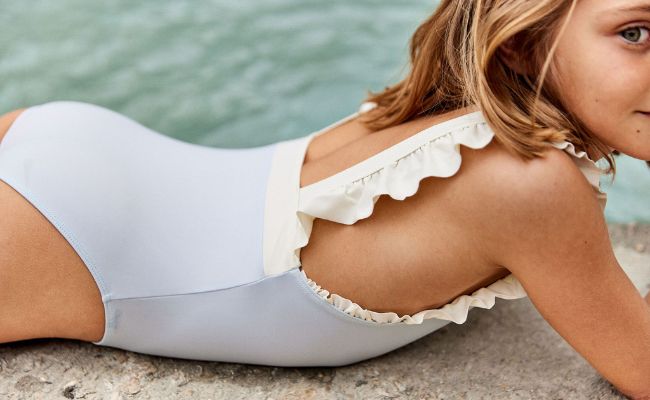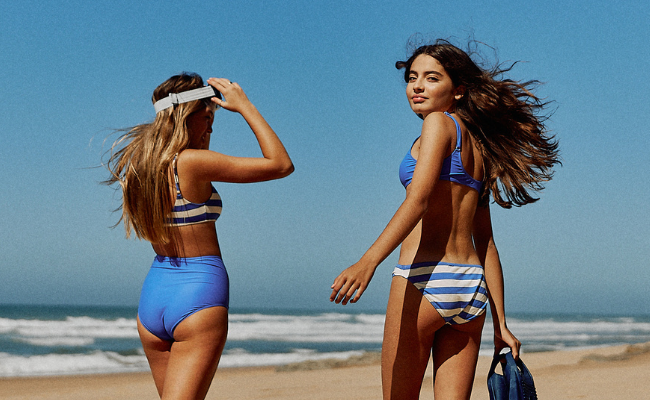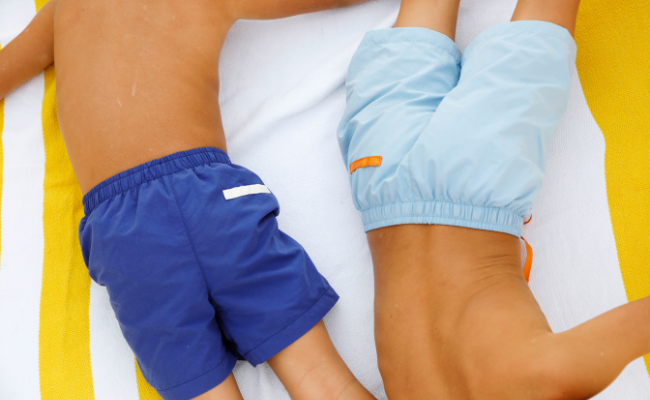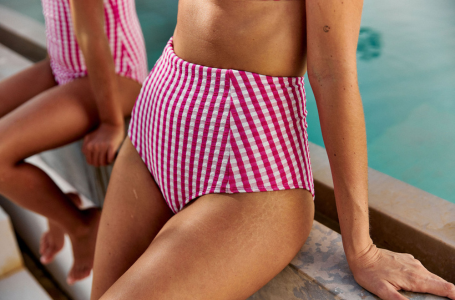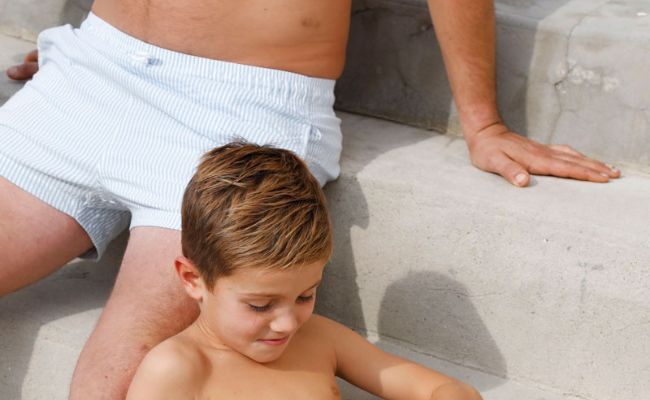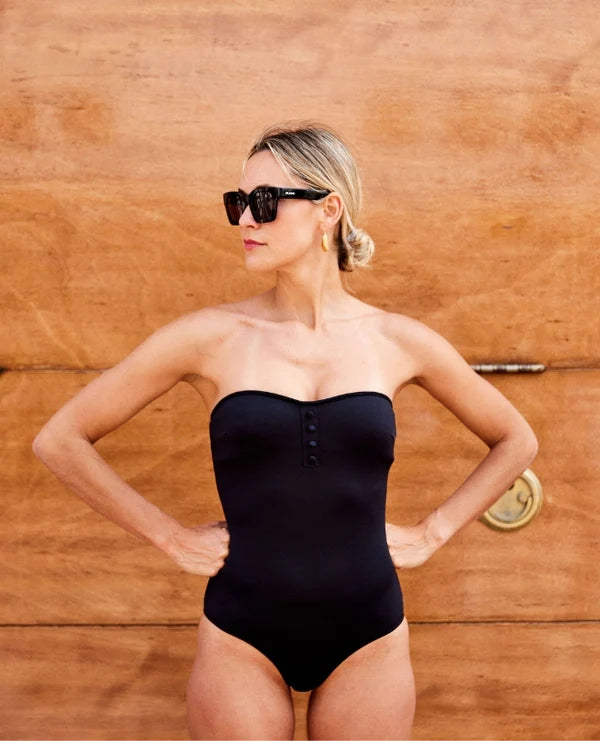
Sunburn and heatstroke: how to avoid them?

|
Sunburn and heatstroke are among the summer hazards we'd like to avoid. How do they occur? What are the ways to avoid them, and how can they be treated when they've already arrived? Canopéa offers some tips and tricks for a worry-free summer.
How to avoid sunburn?
The skin is hot, red, and painful. There's no doubt about it, you've got a sunburn. Nothing major in the short term if it's a superficial burn. In three days, it'll be nothing more than a memory. It's more the long-term effects that are to be feared: premature aging of the skin and the risk of cancer. It's therefore better to preserve your sun capital by avoiding exposure between 12 p.m. and 4 p.m. and protecting yourself well the rest of the time. On the agenda: loose-fitting cotton or UV-protective clothing, SPF 50+ sunscreen on exposed areas, a hat, and sunglasses. Look-wise, it's not bad at all!
How to treat sunburn?
If, despite these preventive measures, sunburn occurs, adopting the right habits will limit its harmful effects on your skin. As soon as you notice it appearing, move to the shade and refresh the burned area with cool water for fifteen minutes, or until the pain disappears. In the case of a widespread burn, you can take a shower or bath, but not too cold, to avoid thermal shock. To soothe first-degree burns, you can apply a soothing ointment, such as Biafine.
In the following days, avoid sun exposure. If this is not possible, protect yourself by wearing loose cotton clothing and apply SPF 50+ sunscreen to exposed areas of the body, reapplying it every two hours. If your skin is peeling, it's tempting to pick off the flakes, but this is a bad idea, as it will only delay healing. Exfoliation is also not recommended, as it is both painful and counterproductive. Treat your skin gently by moisturizing it well, from the outside with after-sun lotion, and from the inside by drinking plenty of water.

|
Natural alternatives to soothe sunburn
Those who appreciate natural solutions for treating minor ailments can treat their sunburn with St. John's wort oil or aloe vera gel. We also recommend poultices made of yogurt, cottage cheese, or clay, which should be left on for 15 minutes. Other solutions to try: rub a halved tomato, a slice of melon, or a cucumber slice over the burn. The effect isn't guaranteed, but why not use it as an emergency solution if you don't have anything else on hand?
How to treat sunburn on the 2nd degree ?
Sunburn can cause more serious damage. The appearance of blisters on the skin is a sign of a second-degree burn. In this case, there is a risk of infection. Clean the burned areas with soap or an antiseptic and do not pierce the blisters. Superficial second-degree burns generally heal within two weeks without leaving any marks. Deep second-degree burns heal more slowly, taking less than a month, and may leave scars.

|
Sunstroke and heatstroke: what’s the difference?
Other summer risks include sunstroke and heatstroke, which are often confused. Sunstroke occurs after prolonged exposure to the sun. Heatstroke, on the other hand, is not related to sun exposure. It results from prolonged stays in a very hot place, such as a closed vehicle parked in direct sunlight. In cases of sunstroke or heatstroke, the effects are the same: the body is no longer able to regulate its temperature. The victim experiences a sensation of heat on the skin, headaches, nausea, and fever. Other, more dramatic symptoms may appear: vomiting, diarrhea, convulsions, and malaise.
What to do in case of heat stroke?
Heatstroke mainly affects young children and the elderly, but it can also affect athletes who exercise in extreme heat or people who have to work all day in a very hot environment. In all cases, the person suffering from heatstroke should be placed in a cool place, removed from their clothing, cool their skin with a spray bottle or a damp towel, and given small sips of water. In case of vomiting, fainting, or unusual behavior, do not hesitate to call the emergency services for guidance. It is important to keep in mind that even if heatstroke is mostly harmless, it remains fatal in 10% of cases.
Don't let all this stop you from having a wonderful holiday in the sun. By learning to tame it, you'll make it one of your most faithful allies!
Discover our collection of anti-UV swimsuits here .




